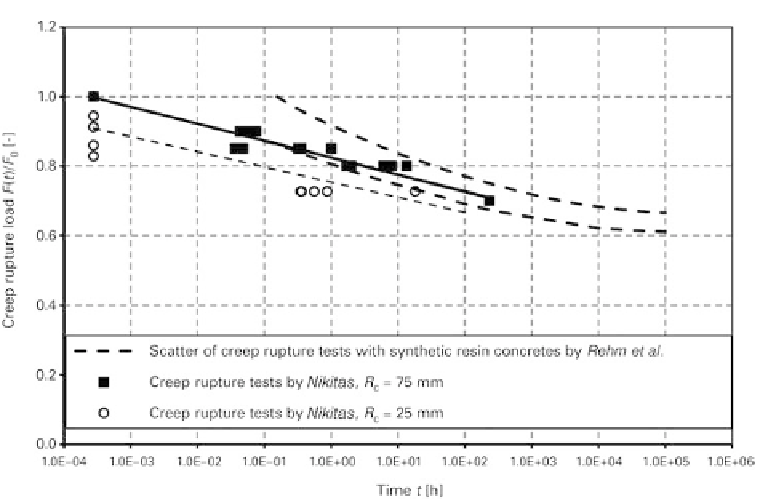Civil Engineering Reference
In-Depth Information
Fig. 7.3
Creep rupture strength of CF sheets at laps
as an intrinsic stress state that reduces the load-carrying capacity. To consider this,
the strain in the CF sheet
is determined from the creep-induced longitudinal
deformation
s ratio. The creep behaviour
of a reinforced concrete column with a wrapping of CF sheet is investigated in more
detail below. DIN EN 1992-1-1 [20, 21] speci
es a Poisson's ratio
ν
=
0.2 for
uncracked concrete and according to the studies of
Lanig
[130] this represents an
approximation that lies on the safe side for the stresses in strengthened reinforced
concrete columns in the range of applications covered by the DAfStb guideline [1, 2].
The equation for determining the ultimate strain that may be assumed for a CF sheet is
therefore
ε
ju
α
r
?
α
T
?
α
F
?
α
E
?
α
Z
?
ε
Lu
ν
?
ε
cc
ε
cc
in simpli
ed form for a constant Poisson
'
(7.1)
7.3 Load-carrying capacity of cross-section
Many different approaches are possible when it comes to designing reinforced
concrete compression members with a wrapping of
fibre-reinforced polymer material.
Some of those approaches have already been incorporated in national standards for the
subsequent strengthening of reinforced concrete cross-sections, e.g. [119, 123]. In
many instances the background to the approach is one of the models known from the
fundamental work on con
ning compression members with reinforcing steel. How-
ever, as Figure 7.1 shows, these approaches are not entirely suitable for designing
strengthening with
fibre-reinforced polymers and need some form of modi
cation
at least.

Search WWH ::

Custom Search